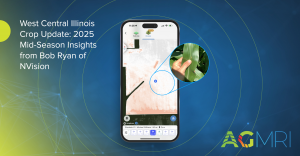Intelinair welcomes four summer interns starting in May. This year’s interns come from different universities and majors, as well as bring diverse backgrounds with a combination of ag and technology coursework and internship experiences.
This year’s participants include:

Ashley Haselby
Purdue University
Major: Agricultural Systems Management

Arno Hovhannisyan
Saddleback College
Major: Computer Science

Jordan Oliver
University of Illinois
Major: Agricultural Leadership, Education & Communication

Luke Picht
Agricultural Science
Major: Northwest Missouri State University
“We are looking forward to having our interns with us this summer to learn more about the exciting opportunities in the ag tech field,” said Conner Schmidt, National Sales Leader for Intelinair. “During their time with us this summer, they will gain hands-on agronomic and technology insights and experience using our AGMRI platform. In addition, they will collaborate closely with our engineering, commercial, and machine learning team members, as well as interact with our customers.”
In addition to their day-to-day responsibilities, the interns will complete individual projects and present their project overview and findings to the Intelinair team at the end of their internship.
Welcome aboard, Ashley, Arno, Jordan, and Lucas!















